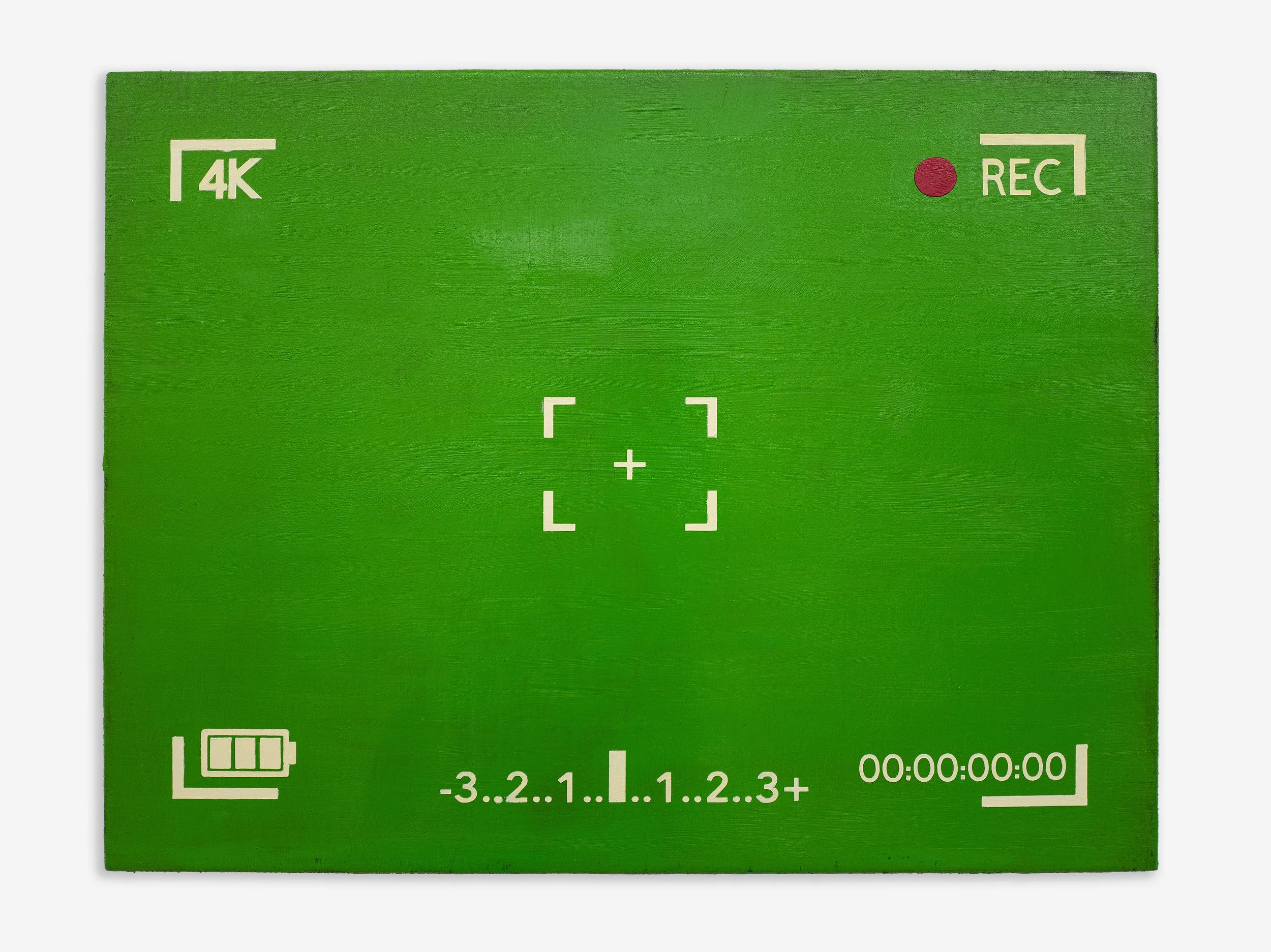4K, 2022
4K, 2022
Oil on linen
41 x 51 cm (16 x 20 in)
4K (2022) captures a camera screen frozen mid-recording, displaying a chroma-key (green screen) composition. The viewer is positioned within the camera’s perspective, collapsing the boundary between observer and participant. This interplay raises questions about the mediation of reality through technology—how images are processed, manipulated, and ultimately perceived. Chroma keying, a technique widely used in film and digital media, allows for the seamless replacement of backgrounds, making the green surface both hyper-visible and entirely erasable. The painting’s saturated green hue highlights its potential to disappear, emphasizing the paradox of visibility and invisibility in digital manipulation. Meanwhile, the 4K recording indicator reflects the pursuit of ultra-high-definition clarity. By suspending the moment between recording and recorded, 4K explores ideas of representation and authenticity in an era where media is increasingly constructed. The work invites the viewer to consider how technology shapes perception—whether we are simply looking at an image or becoming absorbed into its frame.
Q: What is the significance of the visual language of green screen technology in this painting?
Tan Mu: This work draws inspiration from green screen technology (Chroma Key Compositing), a technique used in video editing and special effects that removes a specific color (usually green or blue) to replace the background or composite different visuals. Green screen technology is widely applied in film, television, and video production, prompting me to reflect on the relationship between image recording and viewing. The red dot in the painting symbolizes the recording state, a common indicator on cameras or recording devices that signals to the viewer that they are being recorded. Through this work, I seek to explore how images transition between different media and to examine the technical logic behind image recording.
Q: You mentioned that the red dot in the painting symbolizes the recording state. Could you elaborate on this?
Tan Mu: The red dot typically signifies an active recording process on cameras or recording devices, evoking a sense of being observed or documented. In this painting, the position and meaning of the red dot shift depending on the visual context. When it appears within the recorded frame, viewers may feel as if they are being watched. Green screen technology is conventionally used to observe and document the external world, but when placed on canvas, it becomes the observed subject instead, while the viewer assumes the role of the observer. I find this shift in perspective fascinating, as it reveals the intricate relationship between image recording and viewing.
Q: Can you talk about the process of creating this painting?
Tan Mu: The creation of this painting is similar to my other work Play, which also depicts a green screen. The horizontal green lines and scan-line effect pay homage to early screen displays. During the painting process, I applied multiple layers of green oil paint, building up a thick texture to enhance the visual depth. I used a brush to sweep across the surface in horizontal strokes, creating wave-like stripes that mimic the scan lines and refresh rate effects of television screens. This design not only strengthens the visual impact of the piece but also allows me to better capture the texture and technical characteristics of early screens.



